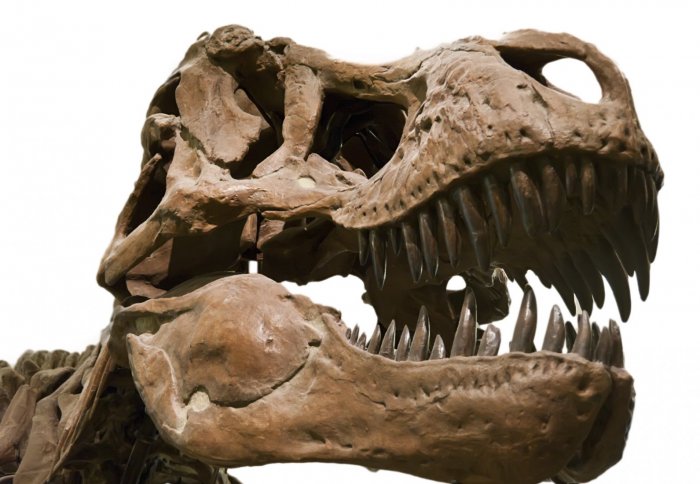

Dinosaurs might have survived the asteroid strike that wiped them out if it had taken place slightly earlier or later in history.
Around 66 million years ago most of the world’s dinosaurs were wiped out by a massive asteroid that slammed into Earth in Mexico, at a place now known as Chicxulub (pronounced chick- shoo-loob). The asteroid, which was around 10 kilometres wide, is believed to have hit Earth with a force one billion times more powerful than the atomic bomb at Hiroshima. It would have blasted material at high velocity into the atmosphere, triggering a chain of events that caused a global winter, wiping out much of life on Earth in a matter of days.
All these factors placed a great strain on the dinosaurs and the ecosystems they depended on to survive. The asteroid impact was the final straw that wiped out the beleaguered dinosaurs
– Dr Philip Mannion
Department of Earth Sciences and Engineering
Now, researchers have carried out a study, using up-to-date fossil records and improved analytical tools, which build a clearer picture of the factors that led to the demise of these prehistoric creatures 66 million years ago. The researchers suggest that if the asteroid had struck a few million years earlier, when the range of dinosaur species was more diverse and food chains were more robust, or later, when new species had had time to evolve, then they may have survived the asteroid.
The research, published in the journal Biological Reviews, was led by the University of Edinburgh in conjunction with an international team of researchers including Dr Philip Mannion, who carries out research to understand in more detail patterns in the evolution of animals that have back bones, which are called vertebrates. His work especially focuses on a group of vertebrates known as sauropod dinosaurs, which were some of the largest animals to have ever walked on Earth.
In the study, the team paint a vivid picture of a world experiencing environmental upheaval before the asteroid impact. During this period, known as the Cretaceous, there was extensive volcanic activity, changing sea levels and varying temperatures. The environmental upheaval affected the diversity of the dinosaurs by reducing the number of large plant-eating species, which so many other dinosaurs depended on as a food source.
When the asteroid hit, the dinosaurs were at their most vulnerable in terms of their ability to cope with environmental change. The asteroid strike caused global tsunamis, earthquakes, wildfires, and sudden temperature swings. Taken together these proved the final straw. As food chains collapsed, one dinosaur species after another was wiped out. The only ones to survive were those that could fly. These evolved to become the birds of today.
Dr Philip Mannion, a Junior Research Fellow from the Department of Earth Science and Engineering at the College, said: “The Earth just before the asteroid impact 66 million years ago was under great environmental stress. The world was hotter than today. There were no polar caps and sea levels were around 20 metres higher than what they are today, reducing the amount of land that dinosaurs had to live on. Also, the place we now know as India was experiencing massive eruptions from super volcanoes, which affected the atmosphere. All these factors placed a great strain on the dinosaurs and the ecosystems they depended on to survive. The asteroid impact was the final straw that wiped out the beleaguered dinosaurs.”
Dr Steve Brusatte, of the University of Edinburgh’s School of GeoSciences, said: “The dinosaurs were victims of colossal bad luck. Not only did a giant asteroid strike, but it happened at the worst possible time, when their ecosystems were vulnerable. Our new findings help clarify one of the enduring mysteries of science.”
The study was supported by the US National Science Foundation and the European Commission. Other collaborators include the University of Oxford, Baylor University, and University College London. The Natural History Museum, the Smithsonian Institution, the Royal Ontario Museum, the American Museum of Natural History and the New Mexico Museum of Natural History and Science also took part in the study.
This article is re-worked from a University of Edinburgh press release.
Article text (excluding photos or graphics) © Imperial College London.
Photos and graphics subject to third party copyright used with permission or © Imperial College London.
Reporter
Colin Smith
Communications and Public Affairs

Contact details
Email: press.office@imperial.ac.uk
Show all stories by this author




Leave a comment
Your comment may be published, displaying your name as you provide it, unless you request otherwise. Your contact details will never be published.